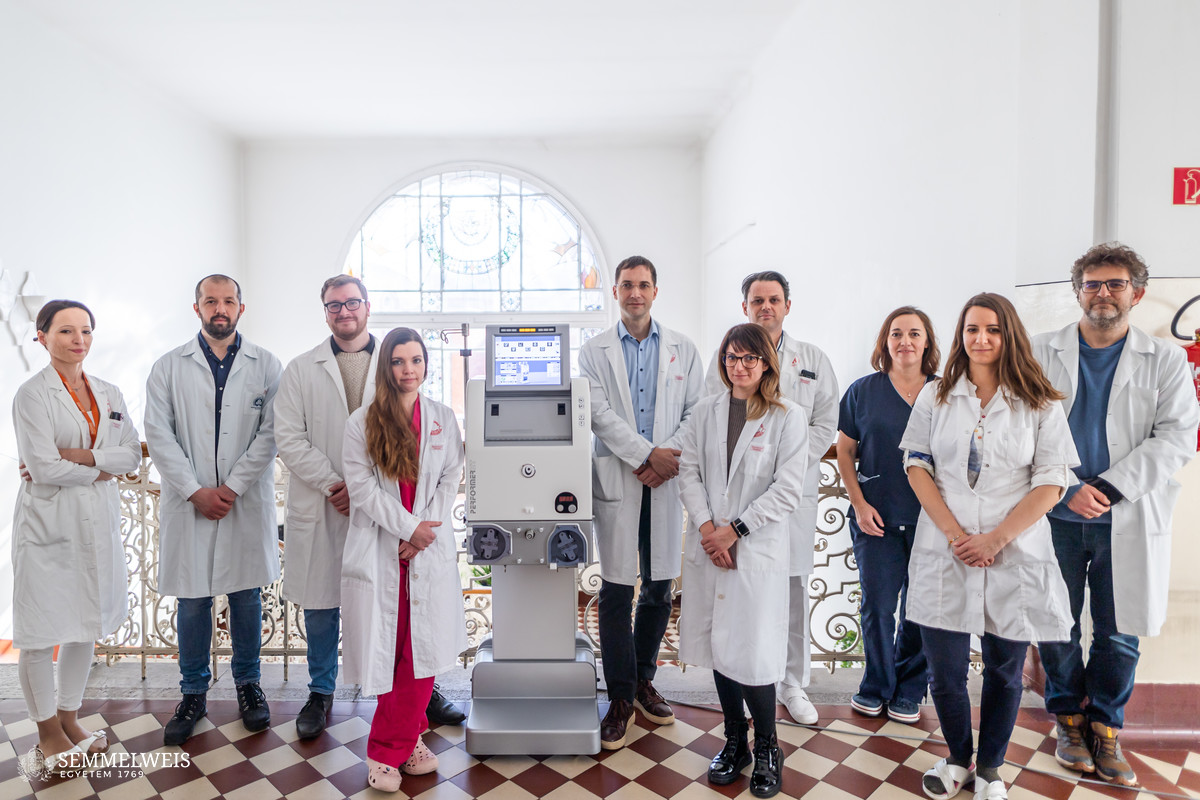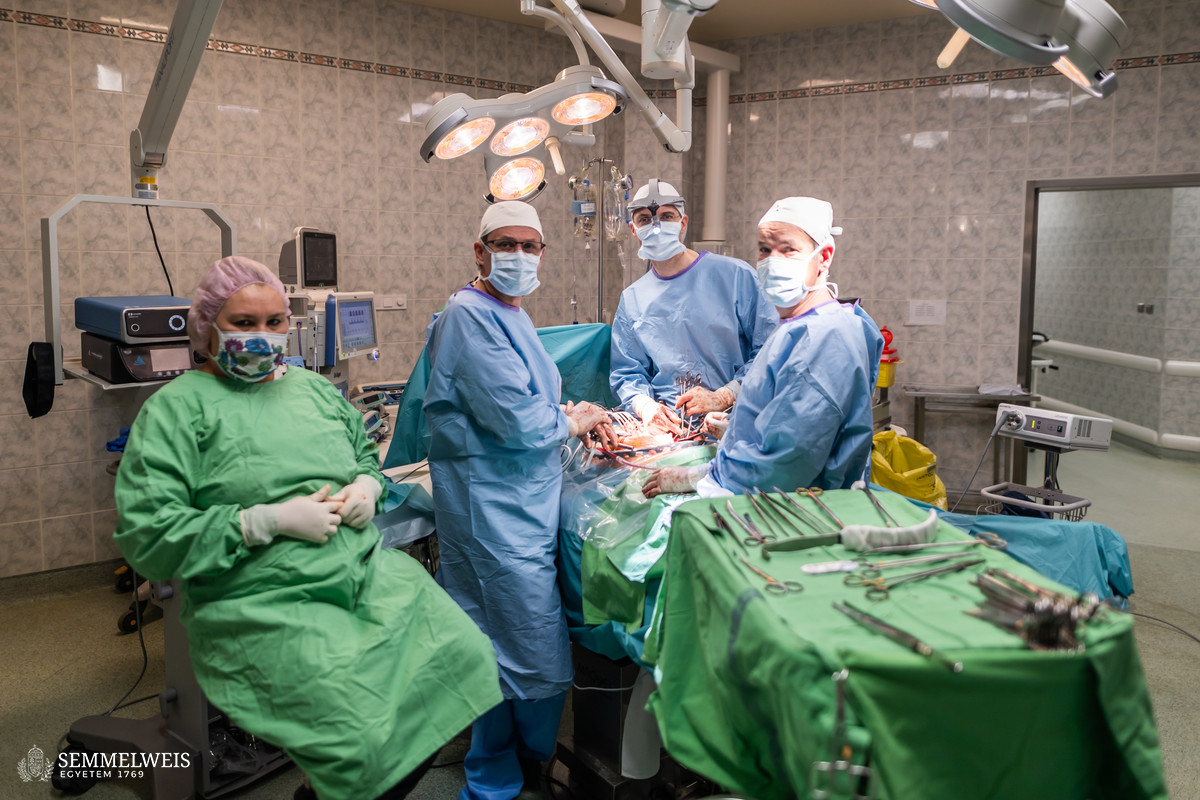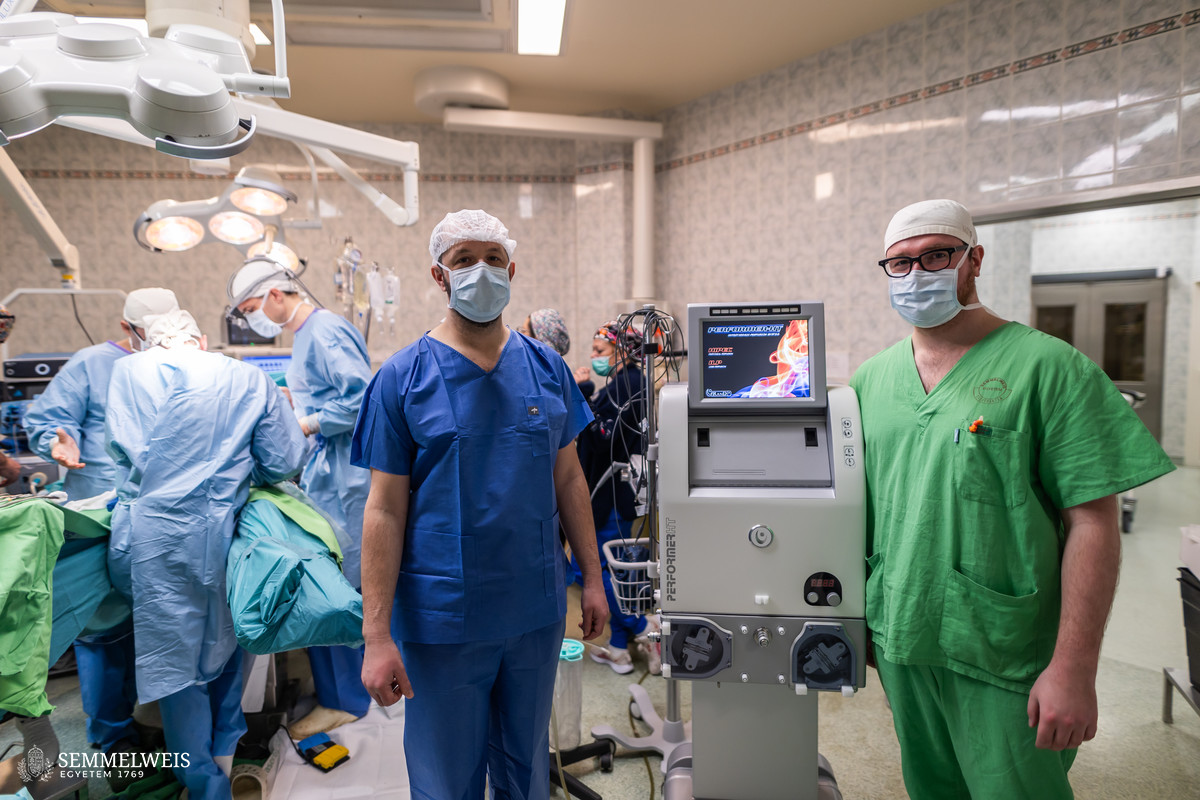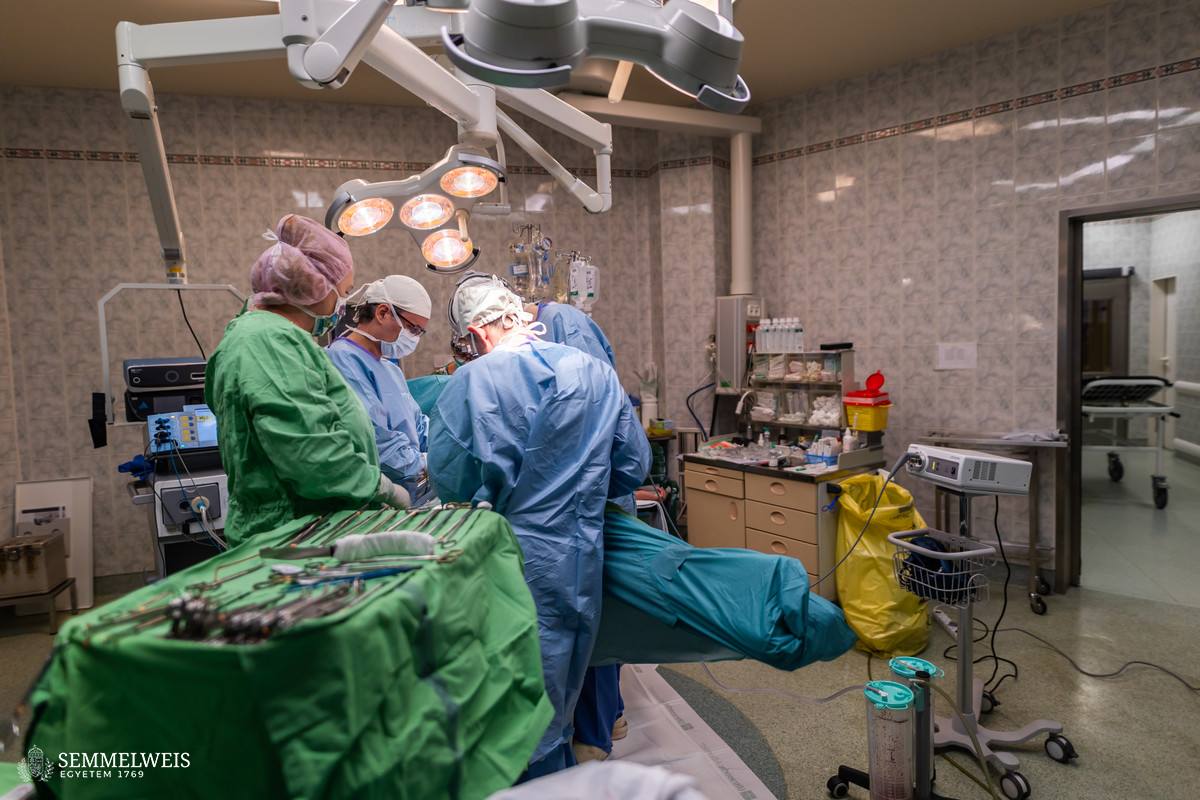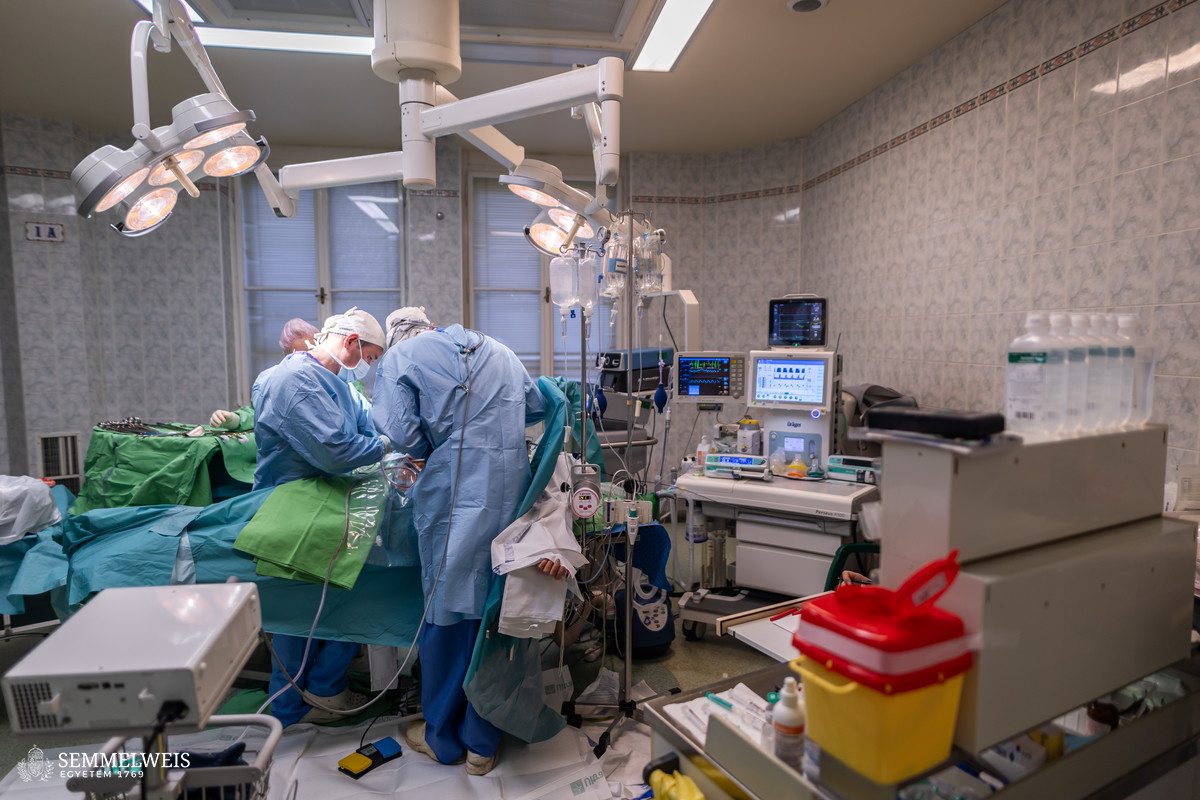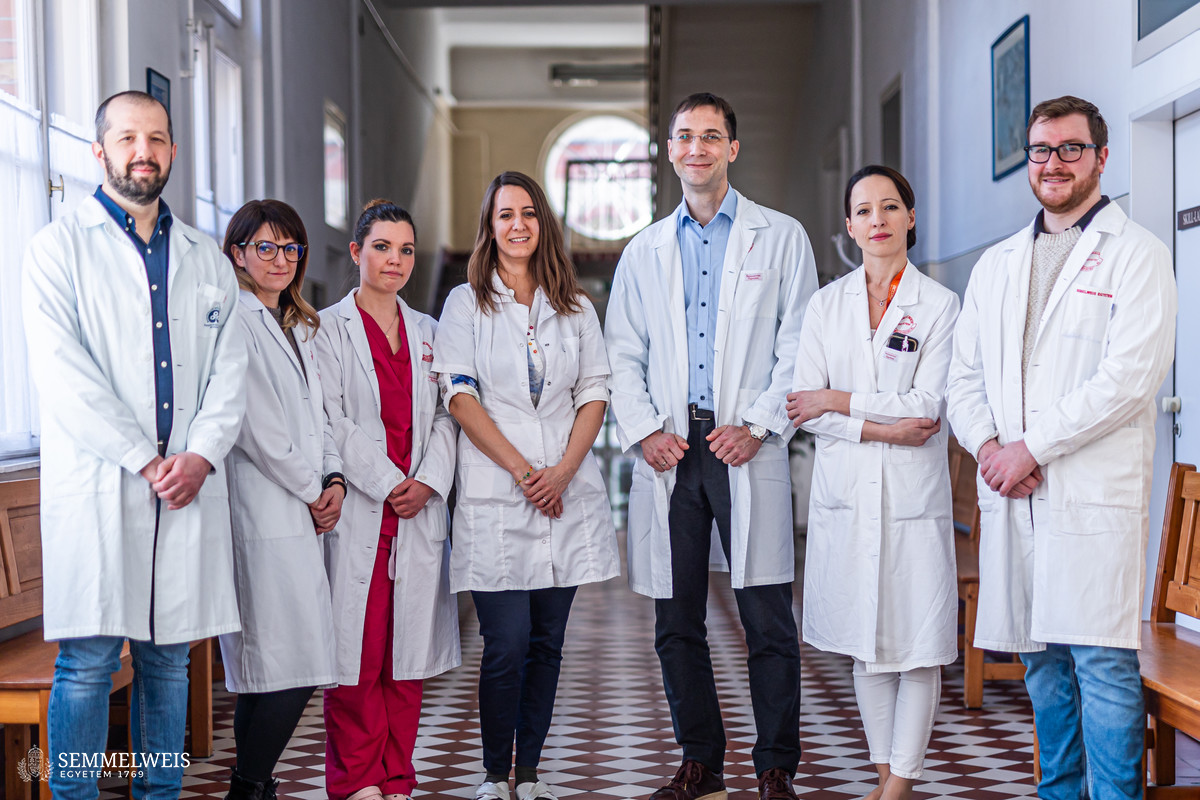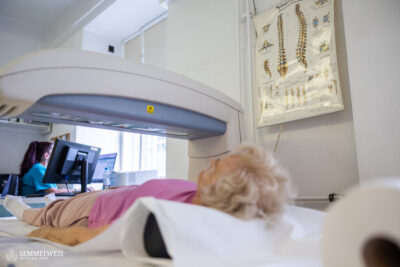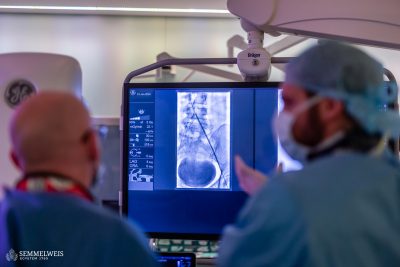Years of preparation, training abroad and the acquisition of equipment to support patient care preceded the first cytoreductive surgery (CRS) combined with hyperthermic intraperitoneal chemotherapy (HIPEC) in the summer of 2021. Since then, the 50th operation has been performed by the joint peritoneal tumor surgical team at the Department of Obstetrics and Gynecology and the Department of Surgery, Transplantation and Gastroenterology (STéG) of Semmelweis University, Dr. Szabolcs Máté, chief physician of the Gynecological Oncology and Tumor Surgery Unit of the Department of Obstetrics and Gynecology, told our website.

Since then, the procedure has been used for an increasing number of indications. “We have recently developed and published an institute protocol for the CRS+HIPEC treatment of tumors of appendiceal and colon origin with peritoneal spreading, and more than 20 percent of all surgeries performed in the program so far have been for such indications,” said Dr. Gergely Huszty, Assistant Professor at STéG and head of the HIPEC program. The procedure may also show promise in the treatment of certain gastric tumors and a rare but highly aggressive tumor of the peritoneum, mesothelioma.
“The fiftieth surgery was performed in the second half of January 2024 on a male patient for a metastatic peritoneal tumor of colon origin,” said Dr. Gergely Huszty.
The CRS+HIPEC procedure, which is used in the largest number of ovarian cancer patients, is primarily aimed at treating tumors spreading through the peritoneum. This may sometimes involve partial or complete removal of organs in addition to the entire peritoneum, and then, at the end of the successful tumor removal surgery, heated abdominal chemotherapy is administered using a perfuser in the closed abdomen. This so-called hyperthermia, in addition to having a direct destructive effect on any remaining tumor cells, increases the chemotherapy’s effectiveness by helping the drug to penetrate the surface cells.

“Unusually, the HIPEC perfusion device is not operated by technicians, but by doctors from the gynecological oncology team – partly because I think it is important that the medical team is familiar with every step of the procedure,” said Dr. Szabolcs Máté.
CRS+HIPEC treatment fits well with the new targeted drug therapies that have emerged in recent years alongside ovarian cancer surgery and conventional chemotherapy treatments. It is partly in recognition of this, and partly due to the achievements of the Gynecological Oncology and Tumor Surgery Unit that the clinic has been accredited by the European Society of Gynecological Oncology (ESGO) as an advanced ovarian cancer surgery center.
“Although we have already completed 50 procedures, we aim to achieve further professional development by setting new objectives and working together to realize them. Our current goal is to further develop our prehabilitation program and post-operative care,” they said.
Melinda Katalin Kiss
Translation: Viktória Kiss
Photo: Bálint Barta – Semmelweis University
